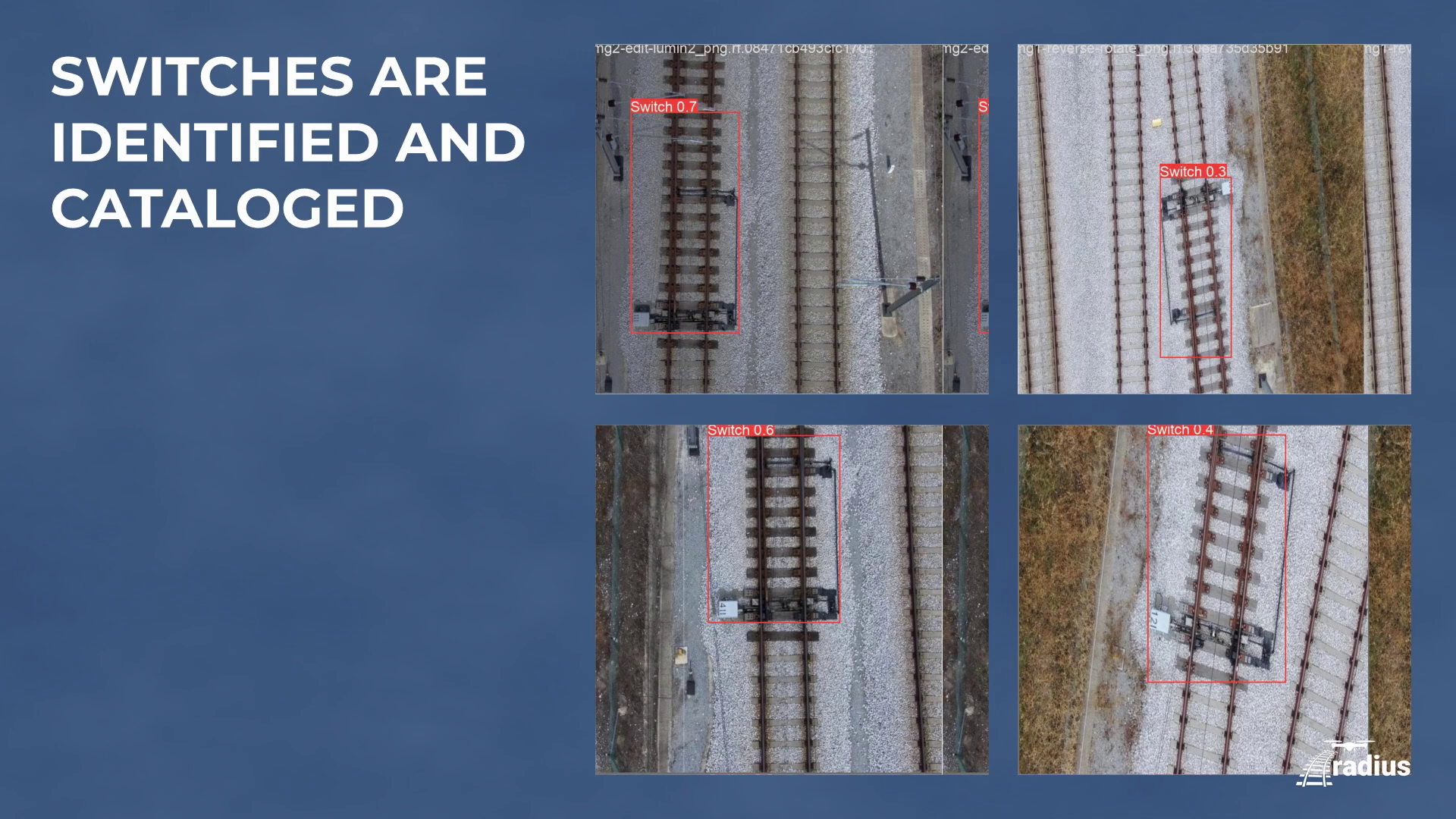RADIUS features, explained in a two-minute video
May 12, 2023
RADIUS is steadily progressing in its goal of establishing a new model for railway infrastructure management. The aim is to develop a new solution that will make it possible to inspect, monitor and maintain railway signaling assets in a simpler, more economical and safer way. The current means of control are based on:
- Human inspections that are highly demanding activities in terms of costs and operational constraints (tracks being inspected need to be closed or limited) and impose safety concerns.
- Wired solutions: they are very expensive and prone to failures. Cables have to be maintained, increasing the maintenance burden. Limited bandwidth of the solution implies that only a limited number of features can be monitored.
- Diagnostic trains that run at lower speed than commercial trains affecting track capacity. Trains and their monitoring equipment are complex equipment that require high investments and operational costs.
To put an end to this problem, RADIUS is designing, developing, testing, and showing a complete monitoring and maintenance system using unmanned aerial systems (UAS).
To make it easier to understand the work of RADIUS, this video shows with actual images some of the major tasks performed.
- Image processing and asset detection: high-definition video recorded with a drone is used to detect possible anomalies on the tracks that could hinder rail traffic, causing delays and difficulties in its operation.
- Switch identification and processing: the railroad tracks have these systems that allow regulating the transit of trains. Their correct operation is essential for the whole railway activity to develop normally. Therefore, it is very important to carry out a quick and agile control to detect possible anomalies.
- Cabinet identification and anomaly detection: using drones, identifying the cabinets and the damages they may suffer becomes easier. Periodic aerial recordings make it possible to identify quickly identify which cabinets have suffered any damage so that they can be repaired in the shortest possible time.
- Digital model of the railway environment that can be used as a reference for the maintenance operations required.
These solutions make it possible to streamline the control of railways and to act quickly to solve problems. This avoids delays, reduces economic costs and provides greater safety.

